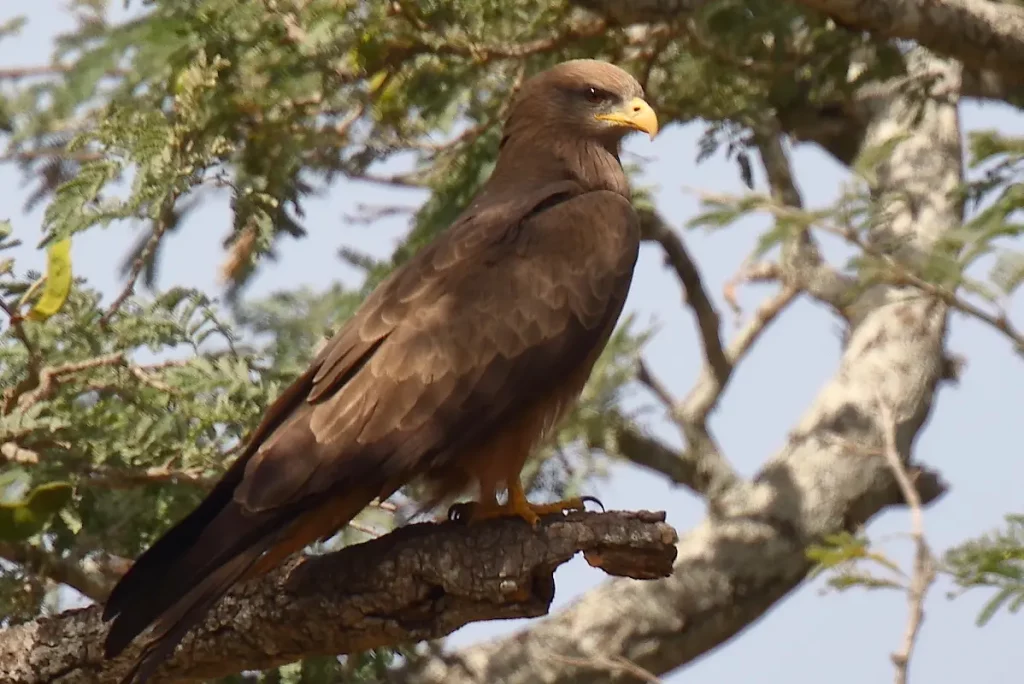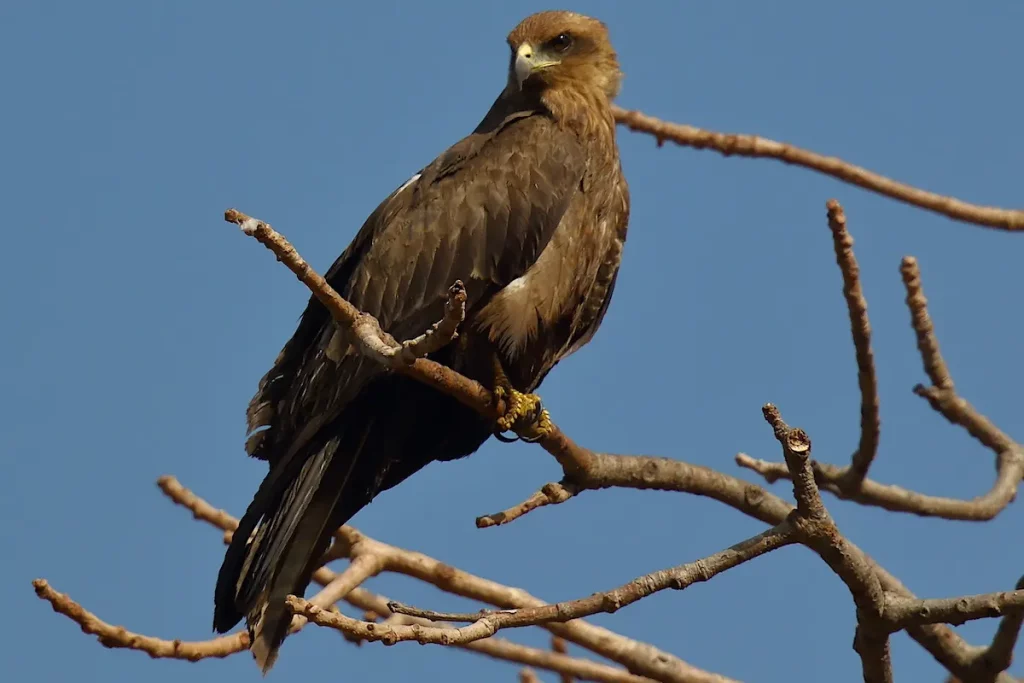The Yellow-billed Kite (Milvus aegyptius parasitus) is a striking bird species found in the beautiful country of Gambia. With its vibrant yellow beak, graceful flight, and distinctive forked tail, this raptor captures the attention of both bird enthusiasts and casual observers alike.
Bird Information
Where can we see a Yellow Billed Kite?
This avian species can be observed in various habitats throughout Gambia, including wetlands, savannahs, and coastal regions. Popular locations for sighting the Yellow Billed Kite include Abuko Nature Reserve, Kotu Creek, Tendaba Camp, and Tanji Bird Reserve. Whether soaring high above the treetops or elegantly gliding over rivers, witnessing the majestic Yellow Billed Kite in Gambia is truly a remarkable experience.
What does it look like?
The Yellow-billed Kite is a striking bird that possesses unique features. With an average length of 40 cm, it displays a sleek and slender body. This bird’s distinguishing characteristic is its distinctive plumage, showcasing shades of brown, white, and grey. The head and neck are a pale grey, complemented by a vibrant yellow bill. Its wings are long and broad, allowing graceful flight maneuvers. The underparts are predominantly white, while the upperparts exhibit a mix of light and dark brown feathers. The Yellow-billed Kite’s keen eyes, framed by a white orbital ring, give it a sharp and observant expression. Its elegant appearance contributes to its status as a captivating aerial acrobat.
What does it feed on?
It feeds on a diverse range of prey items. This elegant raptor has a varied diet, consisting of small mammals, birds, reptiles, amphibians, and even insects. While its diet is primarily carnivorous, the yellow-billed kite is also known to scavenge carrion, making it an essential part of nature’s clean-up crew. With its sharp eyesight and agile flight, it effortlessly hunts and captures its prey in mid-air or from perches. Whether it’s swooping down for a tasty rodent or snatching a flying insect in mid-flight, the yellow-billed kite is an adaptable and resourceful hunter.
Want to know an interesting Factoid?
When nest building they will utilise some unusual materials including rags, mud, plastic bags, and even dog faeces and cow dung!
How does it sound?
This beautiful species is known for its distinctive vocalisations.
Its call is often described as a high-pitched, piercing whistle. It starts with a series of short, sharp notes that gradually rise in pitch, creating a melodious and lingering sound. The call is often heard during flight displays or when the birds are defending their territories.
In addition to their whistling calls, Yellow-billed Kites are also known to produce a variety of other vocalizations including screams, cackles, and chattering sounds. These calls are used for communication within the species, courtship displays, or as warning signals to potential threats.


